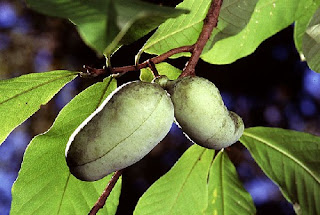Establishing sequoias is very difficult, and with trial and error you can expect years of frustration, even if you buy saplings rather than seeds. Even with saplings we didn't have any success establishing sequoias outside in the Midwest until we started using the Waterboxx PlantCocoon to grow sequoias for the first few years. Since starting to use the Waterboxx PlantCocoon, we have had 100% success, detailed here and here.
As sequoias proved such fun to plant and are so beneficial to the environment, we wanted to know if we could grow sequoia trees from seed. We had tried this before, but had very poor germination rates (around ~1%), and many of our trees that did germinate soon died. We were determined to try again, but to follow the best advice available for growing these seeds.
 |
| Sequoia seeds are tiny - here is an average sized one on a fingertip before planting. It is hardly believable that these become the largest living things on Earth. |
 |
| Seeds on July 16, 2015, right after getting them in the mail. Our biggest problem was having the patience to not plant before "hardening" for a month in the fridge. |
After 30 days, we removed our seeds. We started with 500 seeds, but given our poor germination rate before, we didn't expect most to produce anything. We took about half of these seeds to be planted. We set up a Cone-tainer rack filled with 98 soil holding cone-tainers (both available here). We filled these full of potting soil. For about half of the cone-tainers, we also added some vermiculite, which is excellent at holding moisture. We then took the very small seeds, and added them to the top of the soil mixture. For half of the cone-tainers, we used only one seed, and for the other half we used three to four. We pushed the seeds down slightly into the soil, but we did not bury the seeds.
 |
| Our 98 Cone-tainers in a tray, with our seeds just planted, on August 18, 2015. The vermiculite containing Cone-tainers are white on top. |
 |
| Tiny sequoia trees, just growing from seed on August 31, 2015 |
We did have a few Cone-Tainers with more than two sequoias germinate. We wanted didn't want competition to hurt both sequoias, so we removed the smaller sequoia seedling so the larger could continue to grow unabated. When we removed the smaller sequoia, what we found was astounding (to us, at least). Giant sequoias send down a true tap root! This is incredible, as many trees just send out shallow, lateral, fibrous roots. This true tap root means sequoias can tap deep sources or water (like water held in capillary channels) as well as underground aquifers. This means that sequoias will be able to withstand droughts very well. This only makes sense as many sequoias have lived for three millennia, through many droughts, in California.
We are growing these sequoias from seed in Central Indiana, which has harsh winters, so we decided to move our saplings inside to a window sill over the Fall and Winter and provide a little artificial light to speed up growth. There is a chance this may disrupt the seasonal rhythm of the plant, but we judged this risk as lower than the risk from the freezing.
 |
| The sequoias inside (all moved close to get the most light) on October 3, 2015. We have had about a 33% germination rate so far - not bad for this very difficult to start tree. |
 |
| A sequoia about 5 weeks old - we hope this sequoia is 10 inches tall by spring to it can be planted outside with the Waterboxx PlantCocoon. |
 |
| A sequoia at about 10 weeks - again perhaps doubled in size over the past 5 weeks. |
By late November, we have planted all 500 seeds and have 50 living sequoia seedlings, for a germination rate of 10%. As this is our second planting, and we had a germination and early survival rate of 0% previously, we are well pleased. We are supplementing sunlight with full spectrum CFL light (purchased before full spectrum LEDs were available), and see the smaller sequoias grow ~5% per day - a very healthy growth rate indeed.
 |
| Our sequoias on March 29, 2016 - only 10 left. We will try continue growing these but try again with a new crop of seeds in a few weeks - outdoors. |
We plan to start a new crop in outdoors in early June. The things we will change with this next crop:
1. We will plant using larger size cone-tainers
2. We will plant outdoors
3. We will use only distilled water initially to prevent fungal diseases causing "damping off"
4. We will keep the sequoias outside all winter (but in a cold frame to prevent desiccation from the wind).
You can see our next trial (this time with 2000 sequoia seeds) here.
We hope to see these sequoias grow to the point they can be transplanted outdoors with the Waterboxx PlantCocoon®. They will need to be about 10-15 inches tall at that time. We are growing these sequoias for donation to a few growing partners in the South and Midwest - we will post those plantings online when pictures are available.
Our greater hope is to see giant sequoias planted on public and private property throughout the United States and rest of the world. This tree grows so large, so fast, and lives so long, that it may be one of the few affordable ways to decrease carbon dioxide in the atmosphere, counteracting the problems caused by excessive carbon dioxide.
We will continue to update this post with our sequoia from seed progress. We would love to hear your comments below.
If you would like to plant sequoias you already have outside, with the Waterboxx, you can buy a Waterboxx PlantCocoon here.




